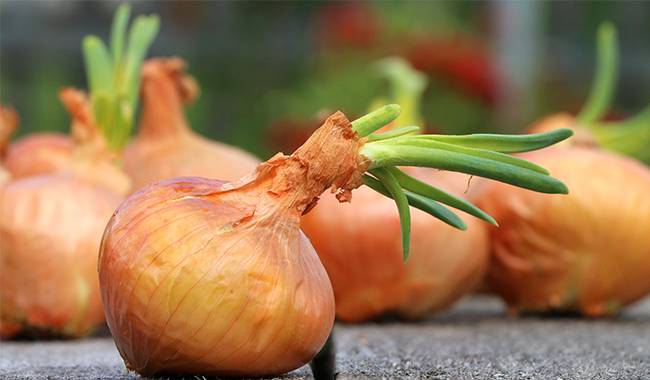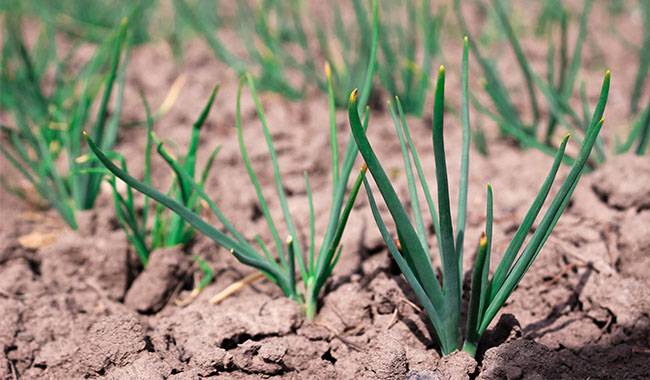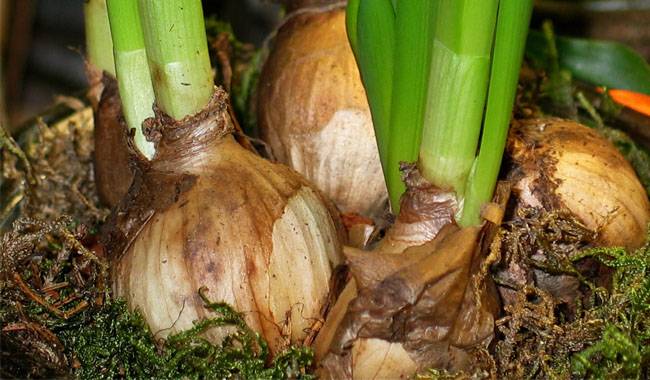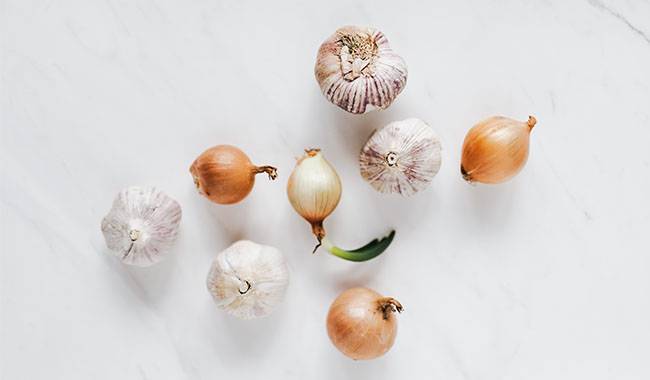
Onions and Garlic are mysterious vegetables that leave an unpleasant odor in the mouth after eating, and it is unlikely that anyone could eat them so raw as to simply take an onion head and simply chew it, like an apple, and the same goes for garlic. Chewing it tooth by tooth, like a seed, which is hard for people to do and hard for them to think about. But nonetheless, these vegetables are in every dish we serve, in every salad.
And what kind of kebab doesn’t have sizzling onion rings in it? And of course, we should not forget the medicinal value of these vegetables: they are a sea of phytocide, capable of drowning any bacterial fire in our bodies.
Therefore, today we will try to show you in as much detail as possible how to store onions and garlic, in normal household conditions, your own, environmentally friendly, dug from the garden bed or purchased at the market.
GENERAL ADVICE
First of all: onions and garlic (whether bought at the store, at the market, or dug from your favorite ground) should be well inspected and cleaned of soil, but not by scraping or removing the husk (except for the undried, rotten ones), but gently, for example with a soft brush or rag.
Next, it should be left to dry for a day or so, and here much depends on the state of the garlic at the moment: it may be dry enough to rustle when you run your hands over its casing and not look or feel damp.
Check the tips and bottoms of the garlic and onions: they must also be dry. Finally, check the heads for rot: if there are no rotten heads and the garlic and onion bulbs look healthy, they can be used for storage. The storage place should be dry and ventilated.
HOW TO STORE ONIONS
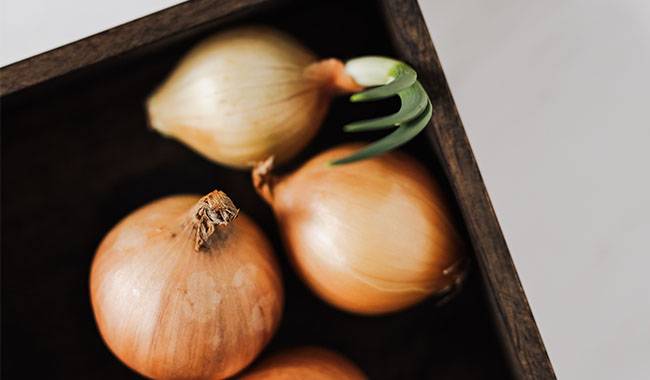
Store onions in baskets
For this reason, if you plan or have harvested an impressive onion crop, it is best to choose a real wicker basket or several. The basket should not be wet, and if it is, leave it in the sun for two days, 24 hours on one side (outside) and 24 hours on the other (inside).
If you are using the baskets for the first time, you can be sure that the onions will keep for a long time, but if it is the second or third or fourth time, you can first treat them with a 2% liquid Bordeaux mixture, spending half a liter of the solution per basket, and then dry them as described above, before putting them in storage.
You can put a lot of onions in a basket full of them and they usually don’t get hurt from the weight, so storage should not be a problem.
Why is a wicker basket a good choice? You regularly, at least once a month, just take the basket out and check the bulbs through the slits, so you can see through them when this or that bulb suddenly starts to rot. Then you have to pick the onions, remove all the bulbs and onions that have touched the rot, and put the rest back in storage.
Onions are usually stored at normal domestic room temperature under a table or in a closet, or in a heated balcony or log cabin, where he lies almost until the new harvest, which is a very long time.
Tip: For storing onions, it is better to use natural baskets, not plastic baskets, they can be harmful and are usually used only for short-term use. During the production process, low-quality materials may be used, releasing harmful substances into the product.
Storing onions in boxes and crates
Good option boxes with drainage holes in the sides, for example, for breadcrumbs and similar products, which are also made in such a way that the products stored in them do not sag and air can circulate. In cardboard boxes with drainage holes, it is recommended to store no more than one bucket of onions per box in your home.
You should put dry newspaper at the bottom, it will absorb extra moisture if any, and it is easy to replace it with new newspaper if you suddenly notice that the onions underneath are starting to spoil.
By the way, in this variant, it is not possible to see the onions as through the compartments of the basket, and once a month you have to go through the whole batch and eliminate the bulbs that have started to rot and all those that have come in contact with the rot.
Storage bins are usually made of wood and apples and other produce are stored in them. If the crates are new and well dried, they are very good. There are two options for storing in crates – if the bulbs are small enough to slip through the gaps between the crate boards, you can line them with plastic mesh to protect them from mice, and then you can control the condition of the bulbs and they won’t fall out.
The second option – no mesh, but at the bottom it is necessary to put a layer of cardboard, otherwise, under its own weight, the bulbs above will damage the bulbs below, they will quickly begin to rot and you will have to go through all the production (in the case of cardboard, replacing a new one is quite simple and fast).
Storing onions in net pockets
The most common thing we see in the market are onions in net pockets, usually weighing five or ten kilos. In the past, when I was a kid, the nets were made of nylon, and the onions were stored there for a longer time, now they are plastic, usually blue or orange, and the onions are stored in them in a worse way.
The advantage of storing in a net is that you don’t have to think about where to look for options to put the onions: such a net can be placed or hung in the pantry or on the balcony, but if it is not nylon, but plastic, then every month you will have to check your luggage. But this option is probably the easiest – you can buy it at the market, take it home, hang it on a hook and that’s it.
Store and keep onions in nylon stockings, it is believed that this is almost the best way to store them, air ventilation, stuffing many heads into the stockings is not possible, therefore, they do not press too much on each other, do not form dents and do not rot onions in the stockings, and if once started, it will be very fast, he can lie or hang so that almost to the new harvest. In addition, if the stocking is transparent, it is easy to observe the condition of the bulb (if rotten, immediately remove the spoilage).
Store onions in braids
Braid – probably few people already know how to braid onions, but the fact is that earlier it was hardly a house decoration: onions are dug up together with green mass, dried and braided, stored on a plain clove, keeping such onions and for a long, long time.
What can not store onions – it is in plastic bags, especially if they are tightly knotted, no air, no circulation of moisture, and onions quickly deteriorate and rot.
GARLIC STORAGE
Using garlic is a little more complicated than using onions. The thing is, garlic is divided into two categories: it has a spring and a winter. Spring garlic is harder to harvest, but – and this may surprise you – it can be stored for up to a year and a half without any loss of quality, while winter garlic is much less easy to store, although the storage methods are basically the same.
We recommend using winter garlic for food or counting on storing it for a few months at most. Spring garlic can certainly be used for food, but learn how to store it until the new harvest, and we will help in this regard.
Preparing garlic for storage
If you want to break the record of preserving garlic, be sure to cut off all the above-ground parts (unless you want to braid it, like an onion) and the root system after digging or buying it, then on a gas stove, with the burner on, you should scorch both sides of the cut, then put the head in a dry room in the sun for a day and turn it over once a day on the other side.
Tip. Remove the above-ground part of the garlic and the roots with sharp scissors or an ordinary sharp knife. Do not cut the stem completely, but leave about 1 inch at the head.
Garlic can be stored in braids, flax bags, onion shells, hanging nets, sunflower oil, flour, and salt.
Braid for storing garlic
People used to be less sick because every residence had braids of onions and garlic hanging. Of course, for braiding, garlic stems should not be cut off, they were braided into the most mundane braids and hung on nails in a convenient place.
What are the advantages? Garlic is always at hand – I can reach out and pick it; you can see what state the garlic is in and if some of it suddenly starts to spoil, you have to cut it up and throw it away; the plant hormones in garlic kill harmful microbes and, as one grandmother said, ward off evil spirits.
What are the disadvantages – garbage, tearing off a head of garlic, will certainly be sprinkled with “skin” from its shell, because they are quite dry. If you leave, for example, on vacation, one of the bulbs will rot, and you may encounter a swarm of fruit flies seizing the apartment or house.
Store garlic in a bag
Canvas bag – it breathes, allows air to pass through, and eliminates excess moisture, so the garlic lies there as if it was just dug out of the bed. One disadvantage – you have to pour out the contents once a month to check for rot: if so, double-check each head and put the “precious garlic” back in the bag. Disadvantage – there is no plant man effect in the room, about the evil spirits, I think, is impossible.
Store garlic sprinkled with onion skins
Powdered with onion shells – this is how a companion helps a companion: garlic in onion shells is spared perfectly. Of course, if the head is dry, burnt, and healthy. You just need a cardboard box with a capacity of one and a half kilograms, pour onion shells in the bottom of the box, then pour a kilogram of garlic, and then fill it all with onion shells so that it fills all the space.
The box is closed, with drainage holes cut in it, and the garlic is stored well. Then, once a month or more often only check him: if there are no diseased bulbs, that’s all.
Store garlic in a net
Exactly as with onions, heads of garlic weighing 3-4 kg (total weight) can be hung in nets on hooks or heated balconies and come out from there as needed. Gardeners note that when hanging, the garlic is stored longer than when lying, i.e. when one head is pressed against the other.
UNUSUAL WAYS TO STORE GARLIC
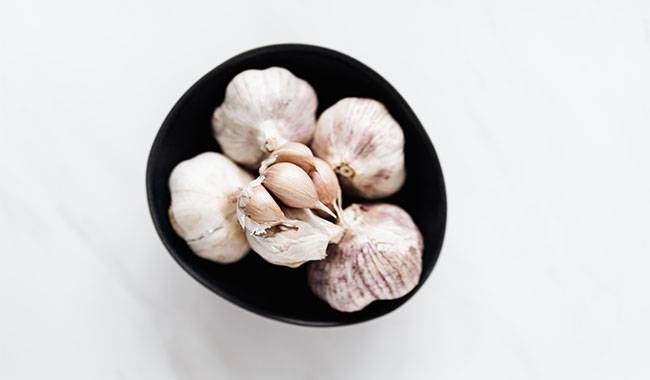
In sunflower oil
Here you will have to make repairs, but, first of all, this method is suitable for storing garlic in spring and winter. The whole head, alas, may also be, on the contrary, very well, not work, you need to divide the head into cloves and carefully peel each one.
Then everything depends on the amount of garlic you have. Of course, this method can not be considered a way to preserve dozens of kilos of garlic, but a dozen heads of garlic are quite possible, and you will have them forever, in the form of peeled cloves, splashed in oil and stored “forever”.
Therefore, we divided the into cloves, each peeled, and now you should find an empty, clean, and preferably pasteurized jar. Typically, half of a liter jar is filled with refined (rather refined) sunflower oil, then little by little pour so much garlic that the oil rises to the top of the bank, it remains with the lid closed and placed in a regular household refrigerator.
The most interesting thing is that both ends of the garlic do not spoil and neither does the oil, it gets a pleasant garlic flavor that is great for all kinds of savory salads.
Store garlic in a jar with flour
Here you can use any volume of glass jars from which you can easily get garlic. The jars should be clean and sterilized. There are three options for this method, storing garlic heads in jars with flour, or whole garlic cloves, or peeled garlic cloves – whatever you want and is convenient for whoever you want. In my opinion, only garlic cloves, peeled, of course, are the best.
Next, you simply pour about 1 inch of flour on the bottom of the jar, another layer of garlic cloves, another 1 inch or so of flour, and so on until you reach the top of the jar. Close the jars afterward, but use plastic lids (don’t roll them tightly) so that you can open them periodically to see if the flour is damp (the banks should be absolutely dry).
Of course, this method has a disadvantage: how do you know if the garlic cloves in the jar suddenly start to deteriorate? You have to empty out the jar every month and check everything. By the way, if you want to quickly separate the cloves from the flour, just sift them through a sieve and they will stay inside.
There is another way to store garlic in combination with flour, it is necessary to stuff the jar with cloves, leaving only about 1 inch of free space on top. Therefore, a large amount of flour should be poured in to cover this free space, and then the lid of the jar should be covered. Here, it is easier to observe the gears and check if they have started to deteriorate and if the flour is damp. If it starts to become damp, remove it as carefully as possible so that it does not get inside the jar, and replace it with new flour that is completely dry.
Cooking salt
You can replace the flour with ordinary table salt. But you need to do it differently: first, pour the salt on the bottom of the jar, then put the garlic, and so on, layer by layer, until the end of the jar. The salt should be dry, but, as you know, it absorbs moisture, so it will dry out the garlic, so there is no need to put a lid on it.
As you can see, there are many, if not many, ways to store onions and garlic, choose any of them, and let’s have a little vote in the comments. Who thinks this is the best way to store them, write it down and explain why.




